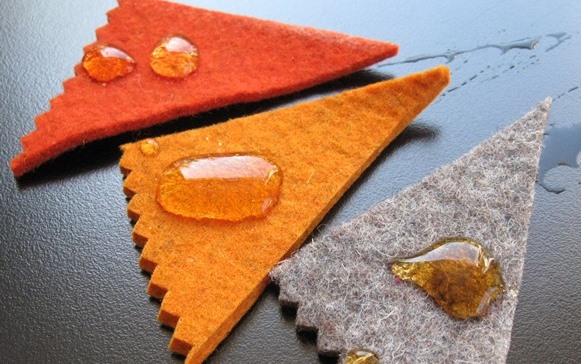
by Flock of Tea Cosy | Flock's Diary of modern wool felt teaware
Tea is widely used as a dye and its stains can be, well, a bugger to get out of a nice white shirt for instance. Since cleaning and care is a common question about these wool felt tea cosies I thought I’d re-post some cleaning tests I did a few years ago.
One can always take it to a dry cleaner, but some simple, quick action is really the best and easiest way to keep your wool felt tea cosy looking fresh and new:
In the name of science herewith a test run of tea stains on some samples of the felt used to make the flock’s tea cosies and a step by step on cleaning.
Firstly, felt is created by washing and mashing and washing and mashing wool so that its fibres all wrap around each other and become the lovely dense mass that we know and love. So don’t pop the felt tea cosy into the wash — either hand or machine — because it will continue the felting process. (Hands up all of us who’ve shrunk that beautiful wool sweater by putting in the washing machine.)
1. WOOL FELT RESISTS LIQUID
The dense wool naturally resists liquid, in this case a teaspoon of fine high-grown ceylon tea.
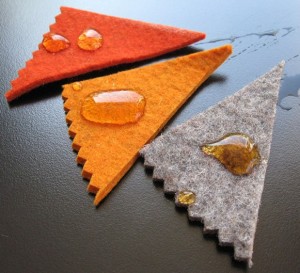
Note how the felt fabric naturally resists the liquid? Now’s the time to quickly blot it up.
2. BLOT THE LIQUID
Use a clean white paper towel or rag and gently blot the liquid. As the stain is absorbed into the paper towel, keep moving to a clean part of the towel so you’re not re-transferring the tea into the felt.
It all comes off with no staining evident.
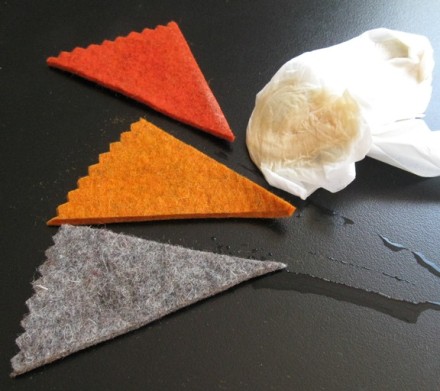
3. HEAVY TEA STAINING
With time and movement the tea will be absorbed by the felt fabric. So in the interest of science (and with some effort) some strong black tea was rubbed in to the wool felt samples. The Cornflower Blue sample was added for this test since it’s a paler colour.
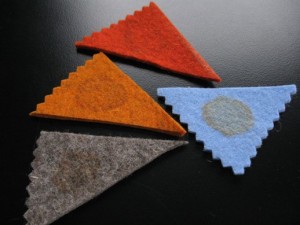
4. SPOT CLEANED AND BLOTTED
The tea spots were lifted on the Tangerine and Burnt Orange by firmly blotting with tepid water using a clean white paper towel. No soap or dish detergent was used — just water.
As the stain is absorbed into the paper towel, keep moving to a clean part of the towel so you’re not re-transfering the tea into the felt. Once clean, the samples were blot-dried using another clean paper towel. I used paper towels because they were handy and white, but a well used clean rag — well used so that all sizing is out of it and it’s super-absorbent — works too, of course.
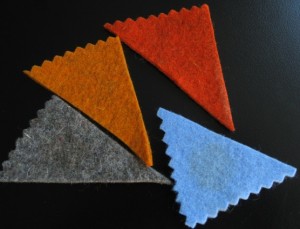
As you can see, there are no spots visible on the Tangerine and Burnt Orange samples, but there are spots faintly visible on the Industrial felt (which is 80% wool) and the Cornflower Blue samples.
5. SPOT CLEANED WITH WATER, SALT AND PEROXIDE BLEACH
So I went to work on the Industrial and the Cornflower Blue samples.
The Industrial came clean with just a bit more blotting with tepid water and clean white paper towel.
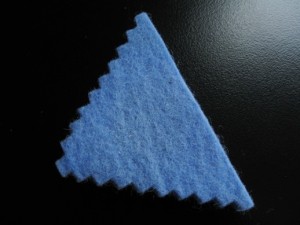
On the Cornflower Blue I tried i) baking powder (didn’t work), ii) salt (worked a bit) and finally iii) some hydrogen peroxide bleach. And it worked! I put about half a teaspoon on the sample and let it soak for a few minutes, then blotted it as dry as I could with clean white paper towel and let it dry on the windowsill.
Note: I used no soap or detergent in this test, either of which would have required rinsing which means more work and more wear on the felt finish.
THE UPSHOT
- Felt is naturally stain resistant (although not stain proof)
- Quickly blotting with a clean white paper towel or rag takes care of most accidents
- For settled stains, gently infuse the spot with tepid water and firmly blot with a clean white rag or paper towel. As the stain is absorbed into the paper towel, keep moving to a clean part of the towel so you’re not re-transferring the tea into the felt. When clean, blot dry (press firmly) with clean dry material. This generally does the trick.
- For the pale cosy colours I’ve had success with short (2 minute) spot-infusions of peroxide bleach (never use regular bleach) followed by gently blotting with tepid water, and finally blotting dry.
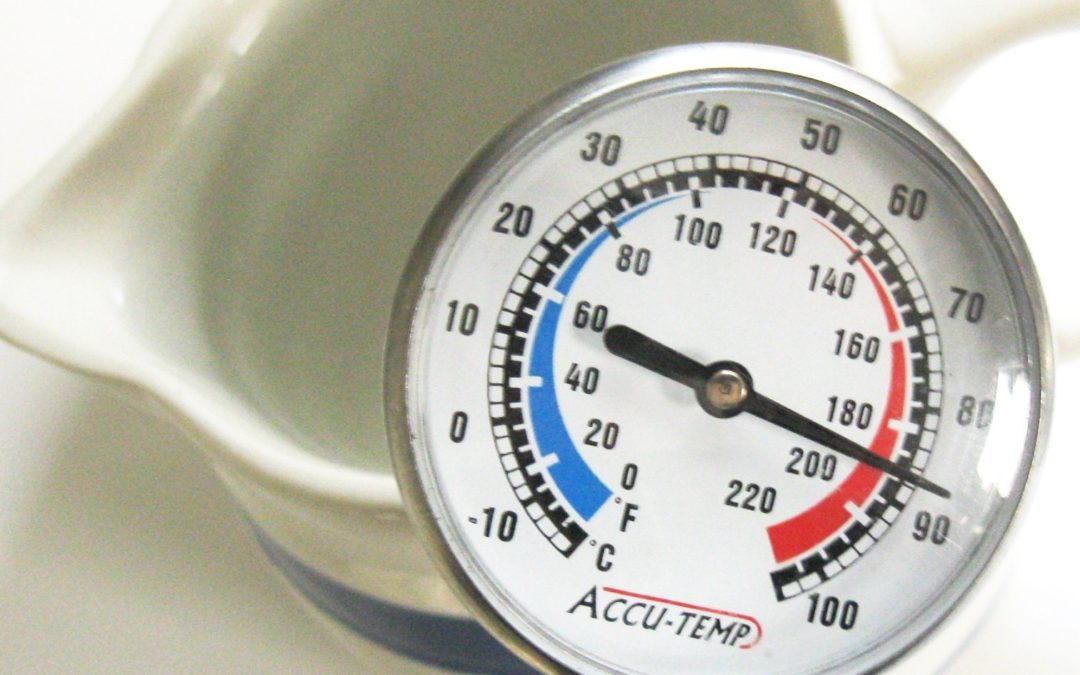
by Flock of Tea Cosy | Flock's Diary of modern wool felt teaware
Almost every tea culture does it — warms the teapot (or teacup) with the boiling water before making the tea in it. Why? Because the room-temperature vessel will steal almost ten degrees Celsius from the hot water. This means if you don’t pre-warm your teapot, your lovely tea loses that heat immediately. One of this flock of tea cosies will do an excellent job of keeping your pot of tea hot, but it can only maintain the heat that’s there.

As you can see, within about 20 seconds this room-temperature ceramic creamer stole over 10 degrees celcius heat from the boiling water just like a teapot does.

So warm that teapot first, then slip your tea cozy over it (say, isn’t that a smart modern tea cozy right there) — and you’ll have piping hot tea for ages.
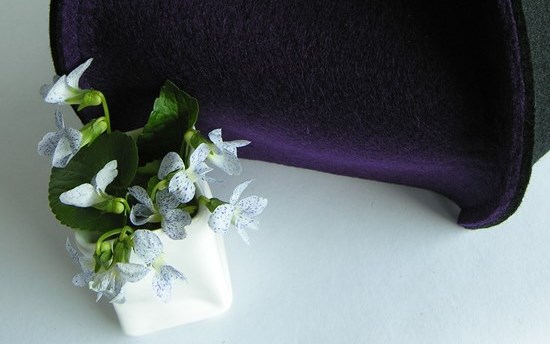
by Flock of Tea Cosy | Flock's Diary of modern wool felt teaware
Tea cozy hack and trivet test.
Customers are such an inventive lot. And helpful.
Fits a tall teapot too
Recently a customer ordered one of the flock’s cosies designed for a french press coffee maker, the 8-cup “Neu” design in Moss Green. Shortly after receiving it she wrote to tell me it fit her tall, narrow-proportioned teapot perfectly. A great customer cosy hack!
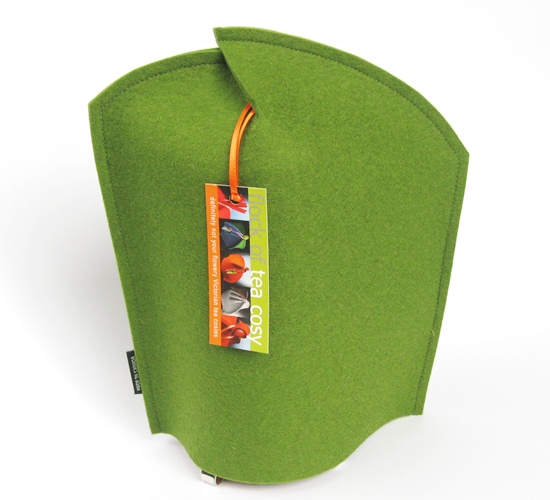
- “I love my green cozy. I have a tall teapot (I know it’s meant for a cafetierre) that I use every day and it fits perfectly!”
Trivets survive stove-hot espresso pot
I also recently received a query about whether the trivets could handle a hot-from-the-stove espresso pot. The colourful wool felt is wonderfully resilient, and perfect for protecting tabletops from hot teapots but I wasn’t confident enough to absolutely guarantee they’d hold up to stove-hot. It turns out they hold up just fine. On the flock’s behalf the customer put the trivet through its paces with her espresso pot and it came through with flying colours. No burn marks and no table-top harmed in the testing.

- “Ta dah! And worked out perfectly. No burn marks.”
Small tea cosy works as egg cosy
I mentioned this awhile ago but it’s worth mentioning again. A clever customer reported that the small tea cosies work wonderfully at keeping a bowl of soft boiled eggs hot on a Sunday morning. Another great tea cozy hack.
- “My wife and I are excited about the two new members of our tea family. They double as egg cozies as we soft boil several eggs and put them in a bowl.”

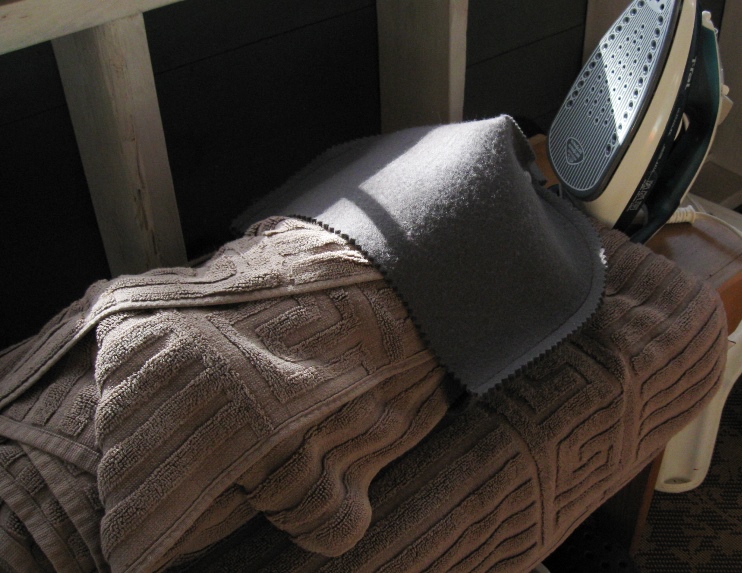
by Flock of Tea Cosy | Flock's Diary of modern wool felt teaware
Just back from a few days north of the city — still some spectacular colour clinging to the trees!
I was visiting SK, the friend to whom I’d given the very first tea cosy cut to what’s become the flock’s signature pattern — that rounded, Roman-helmet shape with a chatter of zig zag pinking along its edges.

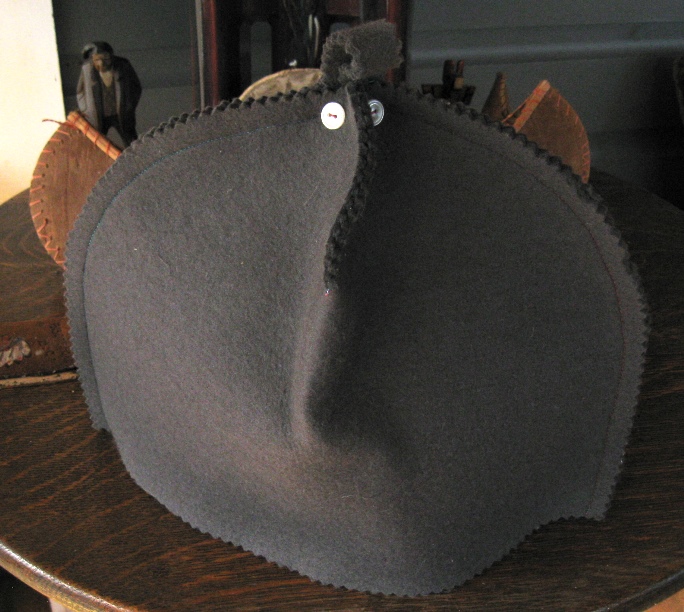
The cosy then and now. Not bad but life’s added a few creases and folds.
In the five years since it was made the cosy has experienced normal wear and tear and stuffing-in-drawers between tea-drinking visitors so, having a lazy afternoon at hand, I thought I’d see what kind of ‘spa’ rejuvenation I could render on it.

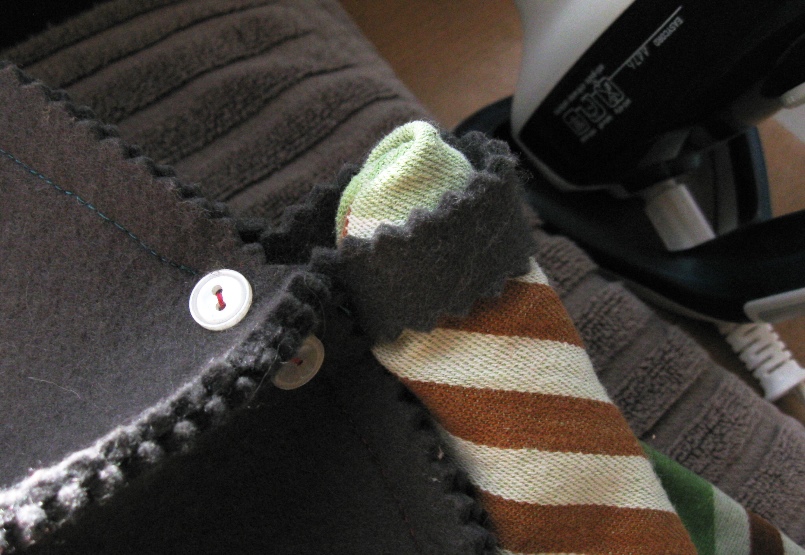
MacGyvoring a rolled thick bath towel to substitute for a small sleeve-ironing board, I placed a clean wet tea-towel between the felt tea cosy and the medium-hot (on medium steam setting) iron and gently and quickly ironed over the creases on both sides. Then rolled the tea towel to insert in the wonky top tab so it wouldn’t create a crease while I, again putting a clean wet tea towel between it and the iron, gave it a quick pass or two.
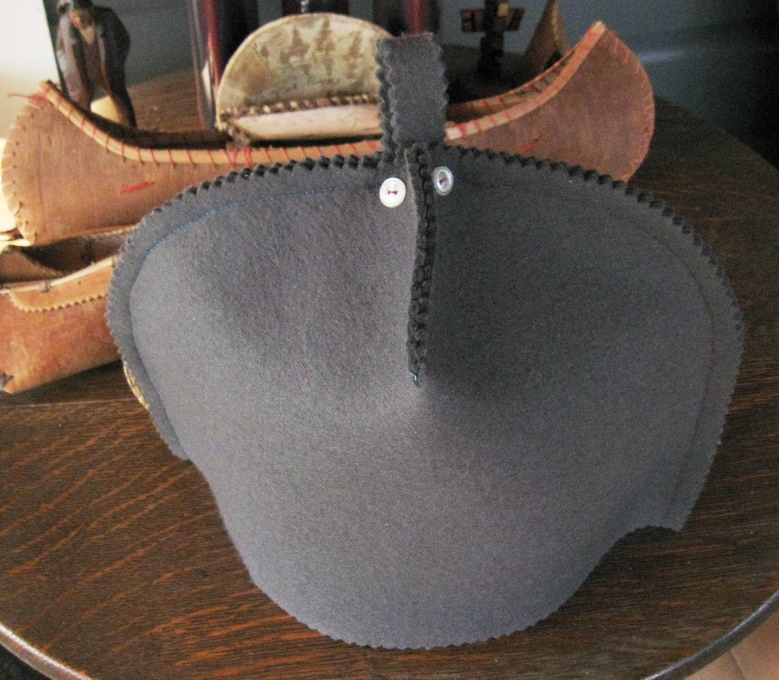
Et voila — pleased to report that a little steam ironing with a wet tea-towel between the felt and the medium-hot iron worked wonders. Just like it’d spent a day at the spa.


The marshes and streams were bursting with beautiful bright red berries. I don’t know what they are but I brought home an armload for the dining table.
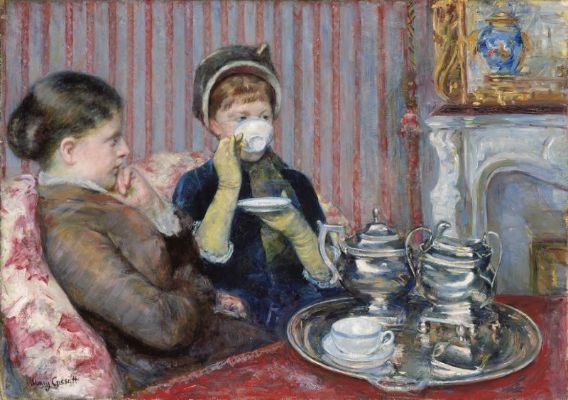
by Flock of Tea Cosy | Flock's Diary of modern wool felt teaware
I’m a big fan of Bill Bryson. For the past several years, since I discovered his writings, I’ve made a point of taking one of his books on my vacation. It ensures I will fall off my deck chair in stitches at least once.
I recently read his “At Home” which is a combination of history, humour and floor plans. Here’s a great quote for all us tea lovers:

“Between 1699 and 1721, tea imports increased almost a hundredfold, from 13,000 pounds to 1.2 million pounds, then quadrupled again the thirty years to 1750 …(but) Not everyone got the hang of tea immediately. The poet Robert Southey related the story of a lady in the country who received a pound of tea as a gift from a city friend when it was still a novelty. Uncertain how to engage with it, she boiled it up in a pot, spread the leaves on toast with butter and salt, and served it to her friends, who nibbled it gamely and declared it interesting but not quite to their taste. Elsewhere, however, it raced ahead, in tandem with sugar.”
And you know, tea on toast? Perhaps just ahead of her time.
























